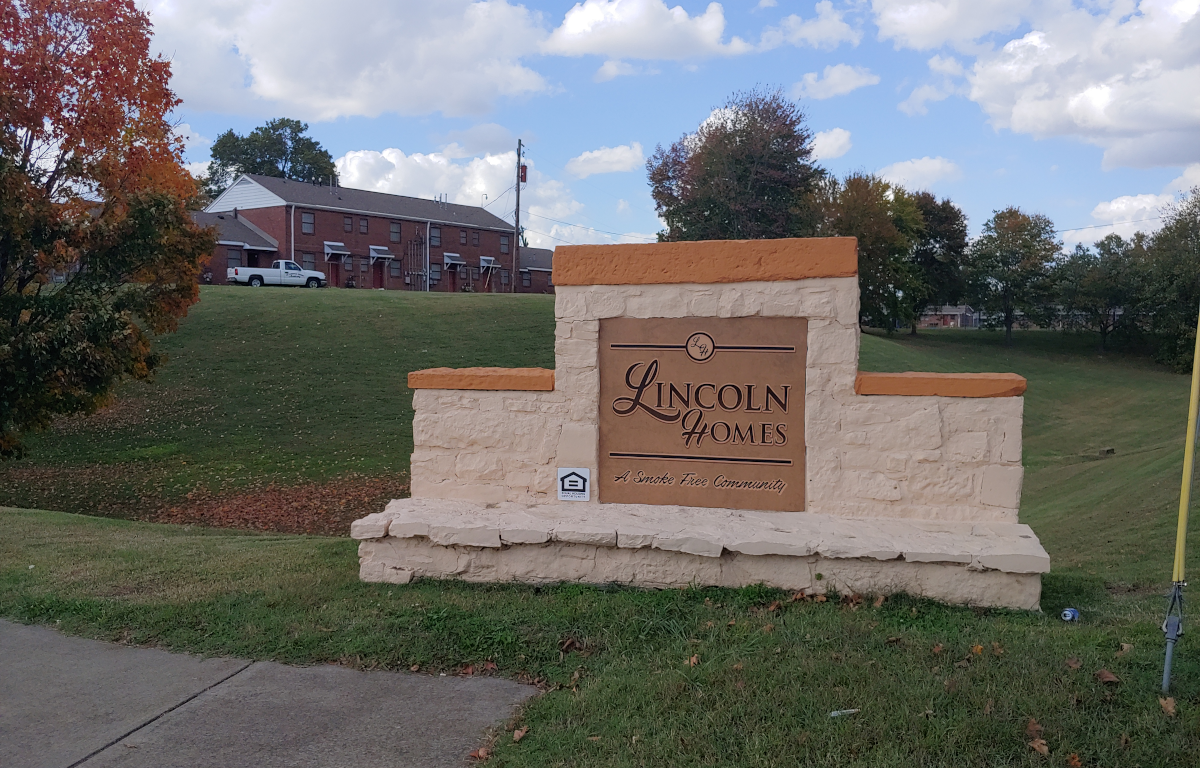CLARKSVILLE, Tenn. (CLARKSVILLENOW) – Lincoln Homes is on the path to major changes, up to and including a complete rebuild, following the Clarksville Housing Authority’s unanimous decision to restructure under the federal Rental Assistance Demonstration (RAD) program.
The program represents a new push by the Department of Housing and Urban Development (HUD) to make housing authorities less reliant on federal funds by allowing them to take part in the private market as a revenue-producing developer.

Currently in Clarksville, 261 units in Lincoln Homes are included in the RAD conversion application.
Clarksville Now recently spoke with CHA’s new Interim Director, Dawn Sanders-Garrett, who explained how the RAD conversion process works and what it will mean for the residents of Lincoln Homes.
Lincoln Homes in need of ‘significant updating’
Lincoln Homes is Clarksville’s oldest public housing community, having been built in 1941, and many of the buildings are in need of “significant updating,” Sanders-Garrett said.
In particular, she noted the plumbing and drainage systems as being in need of rehabilitation, as well as some environmental design issues.
Sanders-Garrett also noted the size of the nearly 80-year-old homes to be a concern, saying the current units are small. She said a goal of future construction would be for units to meet “moderate” size specifications.
Building back
In order to reach their goals, Lincoln Homes would need to be rebuilt, the old units torn down to make way for new, modern housing, Sanders-Garrett said.
In many RAD projects, rebuilding means moving tenants out of the community so that construction can begin.
But in the case of Lincoln Homes, relocation may not be necessary. Because it is less dense than most public housing areas, it is possible that new units can be built in available space without the need for immediate demolition, she said. That means tenants could be moved into their new units before the old ones are taken down to make room for further construction.
“The large amount of green space means that new housing can be added before removing the old. Should this be the case, relocation may not be necessary,” said Sanders-Garrett.
Finding the funds
Desperately needed as it is, rebuilding of Lincoln Homes is a large task that will require a lot of funding – funding the Housing Authority does not currently possess.
Nationwide, there is over $26 billion in renovation needed for public housing, and HUD does not have the funding for it.
“A lot of the capital needs and resources that are needed to reconstruct, rebuild or rehabilitate public housing are simply not there,” said Sanders-Garrett.
RAD conversion offers a solution by allowing the Housing Authority to act as a developer on the private market, buying and leasing property to middle-income and commercial clients and using that revenue to fund the Housing Authority.
“This would allow for public housing authorities to go out on the private market and raise private financing and tax credits in order to fund the rehabilitation or new construction of housing.”
Worries of gentrification
While RAD conversion does stand to improve the Housing Authority economically, some have expressed concerns about gentrification: whether the addition of middle-income housing could lead to pushing out lower-income tenants.
Sanders-Garrett said there are measures built into the process to protect tenants and ensure that the needs of the community come first.
“The first goal (of RAD) is to preserve affordable housing. That is the chief and main goal of the program. If we continue in the manner in which we are with the resources that we have, you will continue to have what you currently have: units that need plumbing upgrades, electrical upgrades and things like that. The housing authority cannot achieve that without being a part of the RAD program,” said Sanders-Garrett.
Sanders-Garrett also suggested that the addition of commercial spaces could be a benefit to tenants, offering easier access to amenities such as grocery stores and pharmacies.
A marathon, not a sprint
However, such changes will not be seen for some time. Clarksville’s RAD application is still in its “infancy,” Sanders-Garrett said, and there are many steps to go before it is complete.
Final approval for the conversion process could take anywhere from six to 18 months.
Despite the long process, Sanders-Garrett said she was excited to begin what she believes is the beginning of a new Clarksville Housing Authority.
“I am excited to be here and work along with all our partners to build relationships that are going to make this a model for future housing development,” said Sanders-Garrett. “This is an opportunity for the Clarksville community. It’s a pivotal time to use the resources that are being provided and for entities to work together to build models that have the ability to transform not only communities but people. And the residents of Clarksville certainly need it.”


